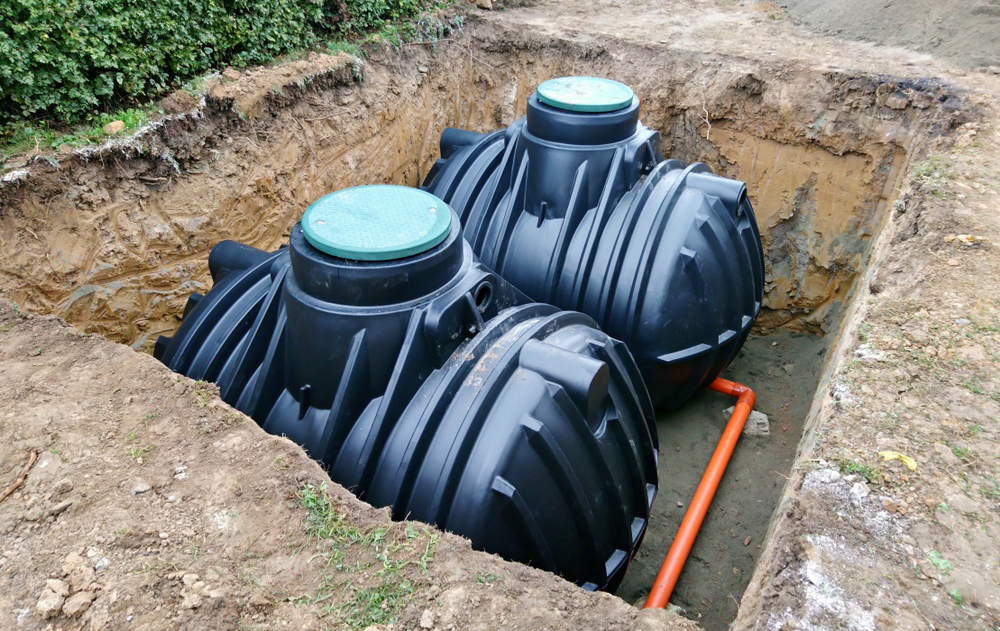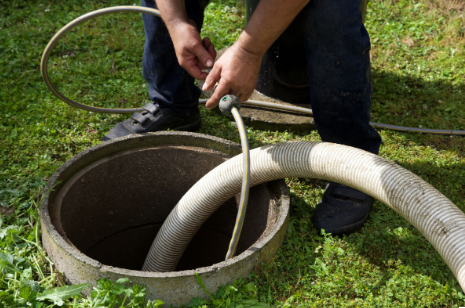Septic tanks are common in rural areas since many of these homes are not connected to a municipal sewer system. However, these particular wastewater treatment systems can be installed almost anywhere if the space allows for them.
If you have a septic tank on your property, it’s important to know how it functions so that you can take proper care of it. These systems can last more than forty years, but adequate maintenance and care are needed to achieve this long lifespan.
So, how does a septic tank work? Let’s discuss all of the crucial information you need to know.
What Is a Septic Tank?
Most septic systems have two main components: a septic tank and a drainfield (otherwise known as a septic field or leach field). Today, we’re going to focus specifically on how septic tanks work.
When it comes down to it, septic tanks have a fairly straightforward job: separating scum, sludge, and effluent wastewater. When waste flows into the septic tank, the sludge (which is solid waste) will settle at the bottom. A layer scum will rise to the top of the tank, which usually consists of fats, oils, and grease. The effluent wastewater (which is, essentially, the treated water) forms between the sludge and scum layers.

What Does a Septic Tank Look Like?
Before we can discuss how septic tanks work, it’s helpful to know what they look like. In most cases, septic tanks are made of polyethylene plastic, fiberglass-reinforced plastic, or concrete. This tank is also buried beneath the ground, so you won’t see it whenever you look out into your backyard.
How Do Septic Tanks Work?
Now that we’ve gotten all of the background information out of the way, it’s time to answer the overarching question: how does a septic tank work? Really, there isn’t as much to it as you might think. The main job of the tank is to separate solid waste from liquid wastewater.
As we discussed, the wastewater inside your home is sent to the septic tank as part of the wastewater treatment process. Once here, the scum floats to the top while the sludge sinks to the bottom. The anaerobic bacteria within the tank then break down the solid waste and consume the organic material.
Now it’s time for the effluent (liquid) wastewater to exit the tank and enter the drainfield. The effluent flows through various perforated pipes while specially-designed components hold back the sludge and scum. Once the effluent passes through the outlet pipe, it settles into the soil for a final round of treatment.
Water needs to flow into the tank regularly; this will help with the breakdown of solid waste. However, if you think you’re dealing with an extremely high water level, contact a trained professional for assistance. The technician will let you know if a problem needs addressing.
How to Care For Your Septic Tank
If you have a septic tank on your property, it’s important to handle it with the utmost care. For example, you should really only flush toilet paper down the toilet. Diapers, paper towels, “flushable” wipes, and feminine products can end up creating a blockage in the system.
How does a septic tank work when it’s experiencing a clog? Well, truth be told, it will have great trouble performing its typical duties. If you’re currently experiencing a clog, you’ll want to schedule a professional septic service immediately.
How Often Should You Empty a Septic Tank?
Now that you know how septic tanks work and how crucial they are to the water treatment process, you’re probably wondering how often you should empty them. When it comes down to it, you only need to schedule septic tank pumping services about every 2 to 5 years, depending on the size and health of your system, number of people in your house, and water usage, among other factors.
Although you might think you have to jump through a lot of hoops to keep your septic tank clean, that’s not necessarily the case. Of course, if it’s been a while since you scheduled maintenance, you shouldn’t put off one of these services any longer than necessary.
If you’re looking for fast septic system maintenance, don’t hesitate to reach out to a trained and licensed technician for help.
Schedule Septic Services With the Experts
How does a septic tank work? If you were asking yourself this question, we hope that you now have a better understanding of how these systems work and why they’re important. It’s also helpful to know what you can and can’t flush down the toilet; many items can affect your septic tank without you even realizing it.
Although it’s vital to know how a septic system works, you don’t have to be an expert on the subject. That’s where our professional technicians come in handy. At Tidy Tank Septic Service, we’re proud to offer a wide range of services, including aerobic septic system maintenance.
You shouldn’t have to deal with septic tank problems, whether you’re at home or running a business. Now that you know how septic tanks work, don’t put off maintenance and other vital services any longer. Contact us today!

